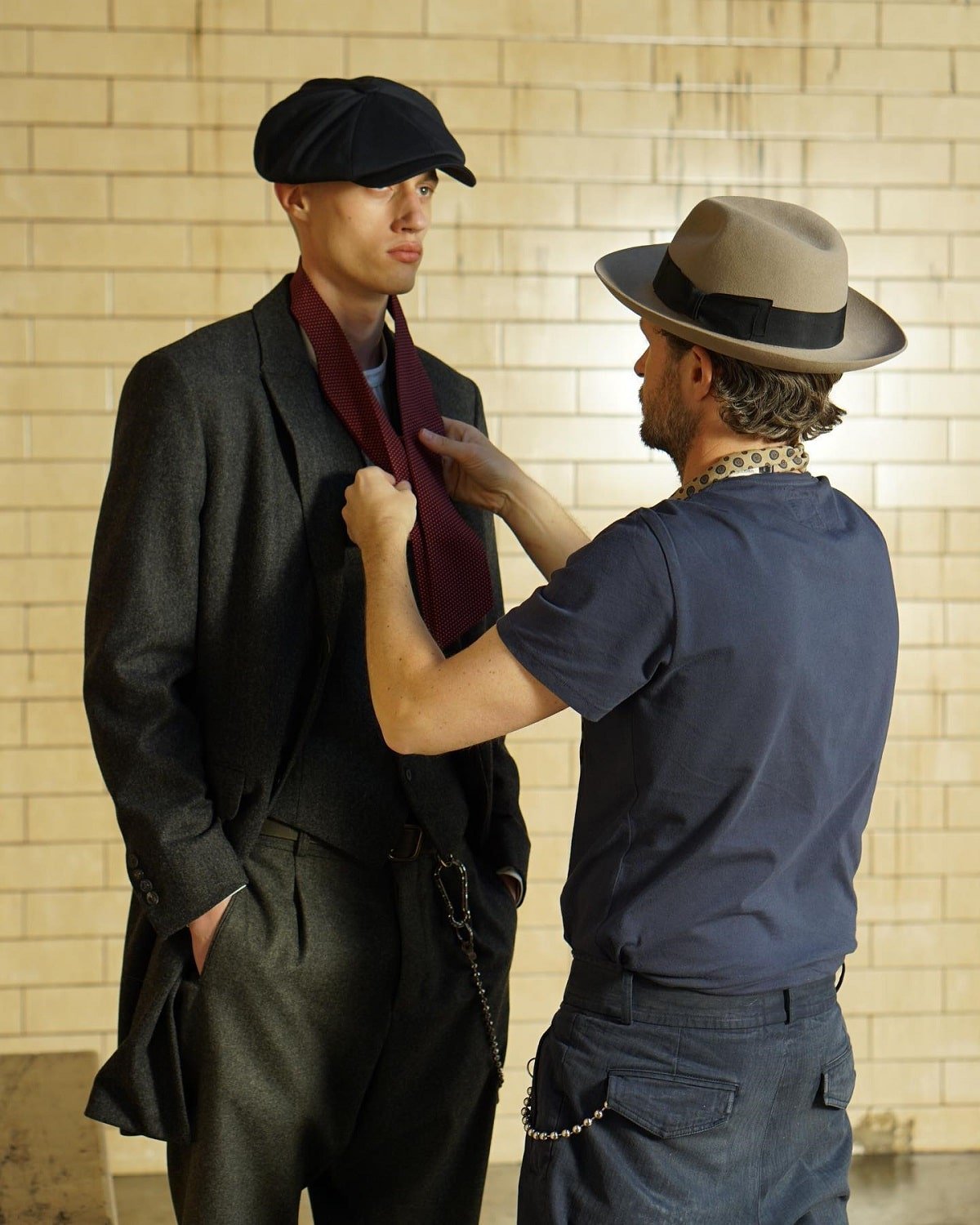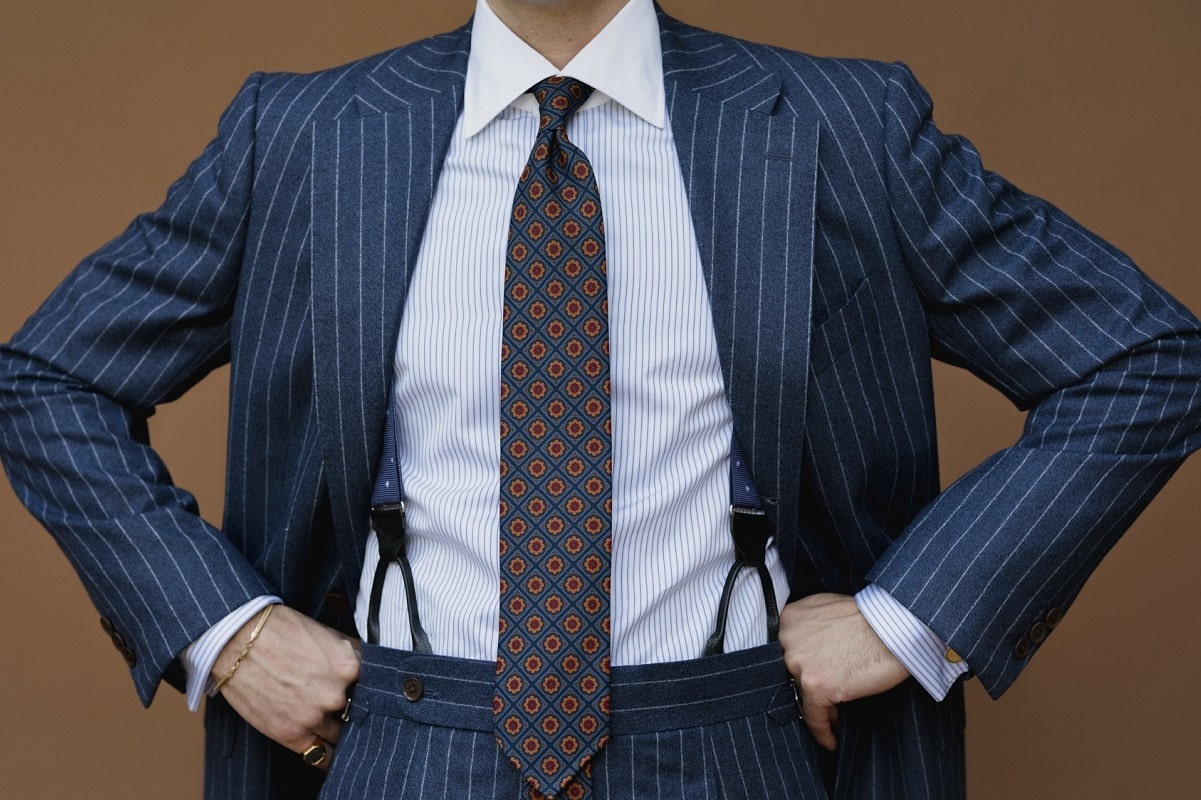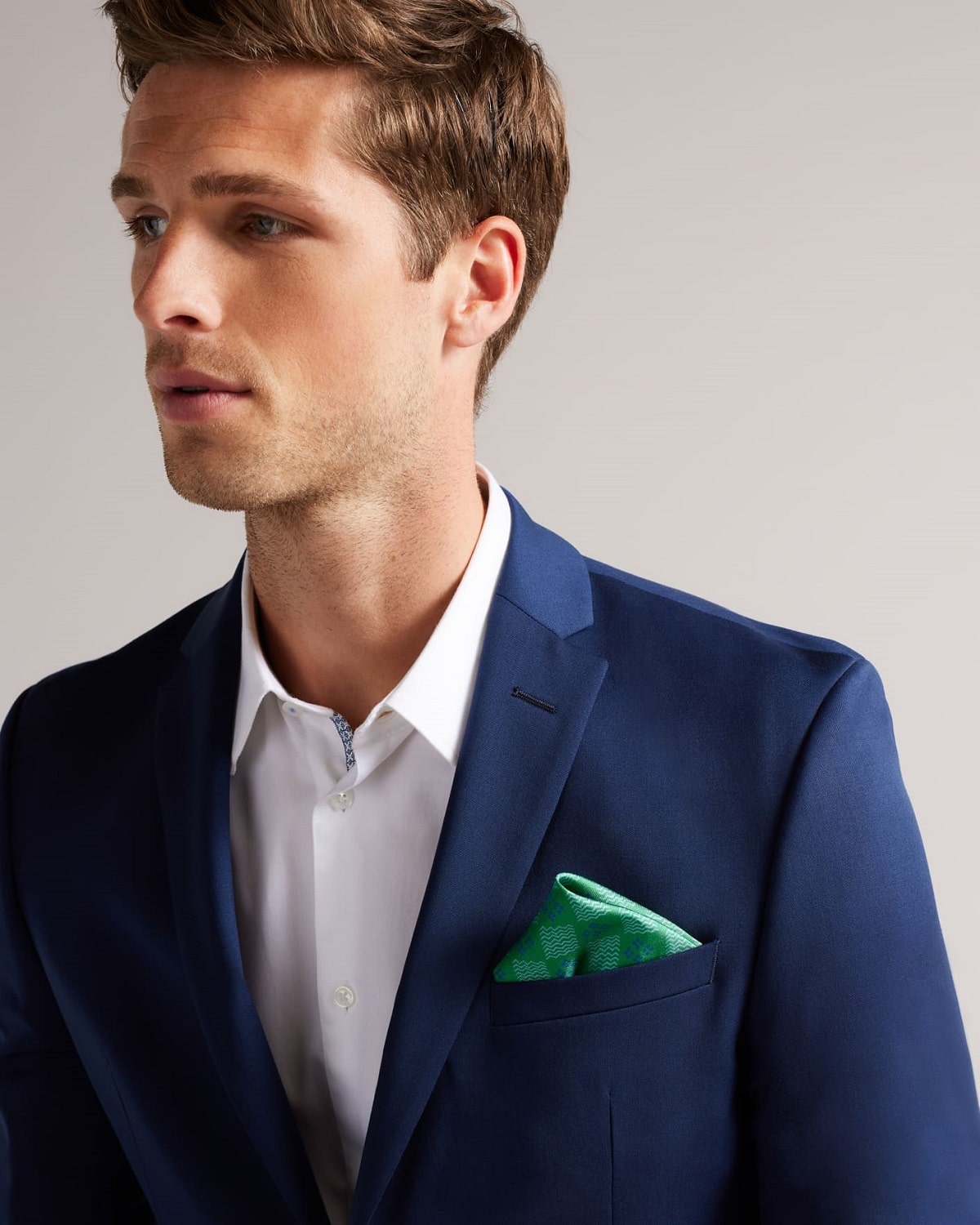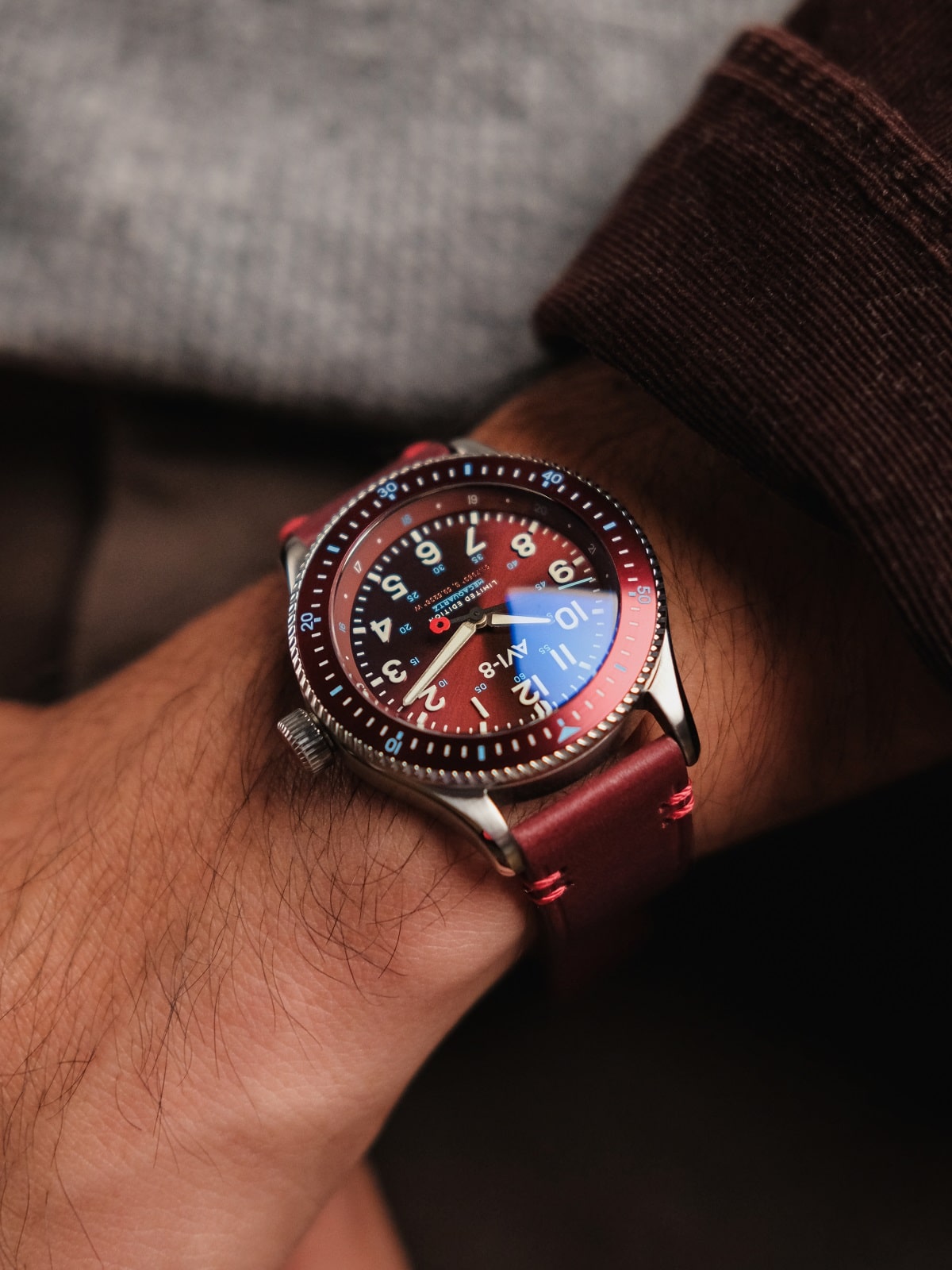1
HOME > Tips & Advice >
MUST-KNOW RULES FOR MEN’S ACCESSORIES
Written by Ivan Yaskey in Tips & Advice on the 4th November 2022

You’ve got your basics down. Still, considering the relatively limited style options men have, you might want to push boundaries further. We’ve been seeing this in real time, whether your fashion barometer is the red carpet or Fashion Week: The standard charcoal or navy suit feels ordinary, and even shirts with a camp collar are starting to seem like a uniform. Patterns and a greater spectrum of colour choices let you venture into this direction, but accessories present a whole new realm. Yet, no matter if you’re looking for a bit of flair or a stronger overhaul, accessories have rules. It’s relatively easy to do too much at once – yet a single piece can go unnoticed. Just as with apparel and footwear, matching also needs to be considered here. So, before you pile on the jewellery or forget about coordinating your leathers, understand the basic rules of wearing men’s accessories:
What Constitutes an Accessory?
Ultimately, anything that’s not a shirt, trousers or shorts, part of a suit, or your shoes falls in this scope. This includes:
Hats: Ball caps to fedoras, hats aren’t the social essential they were decades ago. While one can top off your style – provided you consider the differences between casual and dress hats – it can be relatively transformative. Think about the disconnect and immediate downgrade that occurs when someone slaps a baseball cap on their head while wearing a linen suit versus the effect of a Panama hat.
Belts: Some will argue that these are an essential – especially if you require one to hold up your trousers. Yet, they still function somewhat extraneously, and can have some statement appeal – think patterns, as well as oversized metal belt buckles. Like hats, these can veer in a casual direction – think woven nylon – versus the polished and professional finish of leather.
Ties: Neck or bow tie, this increasingly obsolescent accessory is still expected for certain formal dress codes. Yet, for these situations and if you’re still one of the few wearing a tie to work, print and material ultimately set the character. As well, you’ve expected to first match your tie to your shirt and your suit.
Cufflinks: Also more of a formal accessory with some wiggle room, cufflinks tend to be brought out for more formal occasions, and are designed to be worn with a French cuff shirt.
Pocket squares: You’ll tuck this into the pocket of your suit jacket, ideally for a subtle pop of colour and personality. While this accessory once had a functional purpose – if you spotted a woman crying, you’d give the smooth cloth to her to dry her tears – it’s mostly an accent now that complements yet stands apart from your shirt, suit, and tie.
Watches: Watches fall into a similar dichotomy as hats. You have more casual ones – think military and sport-inspired styles – and smaller, more refined dress watches with a leather band that’s intended to match your suit.
Jewellery: Although the category of jewellery encompasses watches and cufflinks, it extends to more fashion and occasion pieces, like wedding rings, necklaces, and bracelets.
Sunglasses: You can’t go wrong – at least in terms of versatility and longevity – with something classic. Like any accessory, though, these go through style phases, with crystal colours and acetate construction in demand in the present.

Basic Men’s Accessory Rules
For some structure around accessories:
Start With Your Clothing
Begin with a solid foundation – literally in this case. Accessories often get lost among patterns, prints, and textures, so make sure you’re wearing at least one solid-colour garment, preferably in a cool or neutral tone. Then, match the accessories to your clothing – both the solid and patterned pieces.
Patterns vs. Accessories
The previous recommendation isn’t to say that you have to avoid patterns when considering an accessory. Instead, you have four choices:
Solid accessories with a patterned garment: This creates enough contrast so that both pieces feel distinct. In this instance, look for at least one shade – similar or related – that pulls both together.
Patterned accessories with a solid garment: The pattern functions as an accent. In the instance you’re new to patterns, accessories tend to be the gateway to a full-on shirt, trousers, or suit. Here, try the reverse: Look for a pattern that complements the solid shade but still manages to hold its own.
Pattern clashing: This can go wrong, but at the same time, it illustrates mastery with men’s accessories. As we’ve covered in the past, keep the patterns distinct based on size or configuration, but look for commonalities among colours. In this regard, the smaller item should typically feature a bigger pattern, while a finer print or texture should be relegated to your shirt or suit jacket.
Textured vs. untextured: Texture essentially creates a contrast through its more tactile character. Especially where ties and pocket squares are concerned, just changing up a material’s texture while staying within a related realm of colours can create a sufficient contrast.

Colour Proportions
While you can pair a charcoal pocket square with a bright red suit jacket, the reverse is more frequently advised. As accessories function as accents and finishing touches, you’re recommended to use them as channels for brighter, less-typical colours and prints. Your clothing, meanwhile, serves as a more stable framework: Lean more toward navy, charcoal, darker blue, olive green, or deeper purple for the neutralizing effect they have.
Coordinate Leathers
Shoes to your belt to a hat band, keep leathers in the same hue. This is similar to jewellery metals: Brown and black together creates a disconnecting, disorienting effect that takes away from the rest of your ensemble.
Check Your Metals
You’re advised to stick with one metal for your jewellery – all silver or gold tones, rather than a mix. This scope extends to everything else metal you’re sporting – belt buckle to tie clip, watch, and cufflinks. This ensures they function more complementary, rather than multiple divergent points of glimmering light across your form.

Pay Attention to the Dress Code
Yes, you might want to show off your rare chronograph watch, but the bulkier metal design comes off as too flashy for a black-tie affair. Similarly, those creatively shaped cufflinks look off here, and are better reserved for weddings and occasions with a cocktail dress code. Generally, the more formal the event, the smaller and more classic the accessory should be. Looser restrictions present a broader path for experimentation.
What to Match
Beyond coordinating leathers and metals:
Think of your body in halves: First match your tie to your shirt and then to your suit jacket. Below the waist, make sure your shoes and belt match. Then, check that the accessories on your top half – pocket square, tie, and watch – coordinate with your trousers and those on the lower half.
Ties vs. Pocket Squares: Don’t use the same colour or pattern. It’s too matchy-matchy. Instead, think about both in relation to your shirt and suit jacket.
Pocket squares vs. everything else: In thinking about everything else you’ve got on, look for a complimenting or tastefully contrasting pocket square colour and material compliment. In this regards, make a thicker, more patterned fabric less visible compared to something in a solid colour or with a finer weave.

Trending
2
3
4
5
6
7
8
9
10










